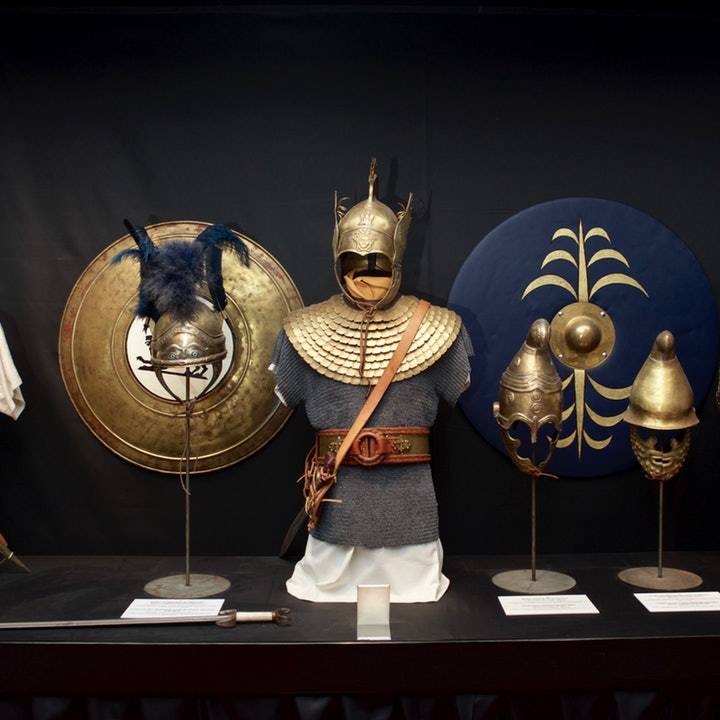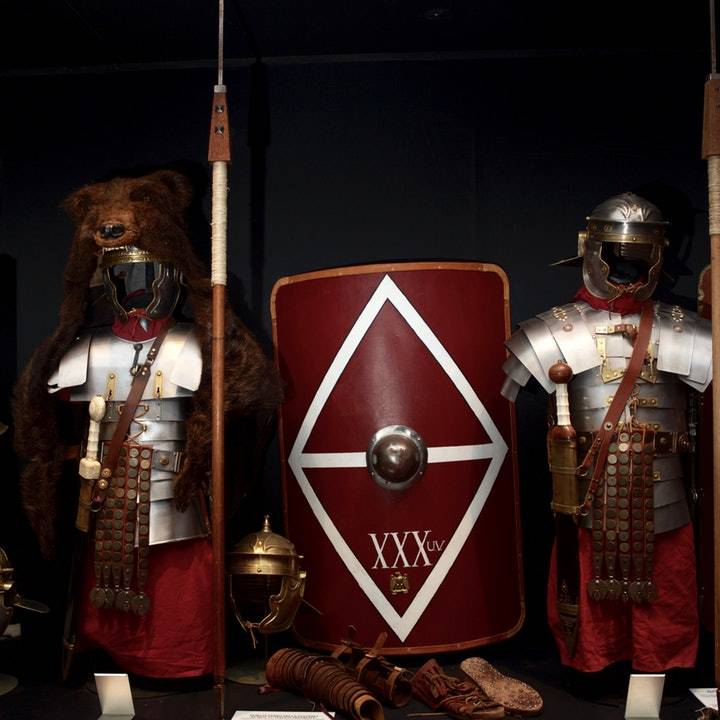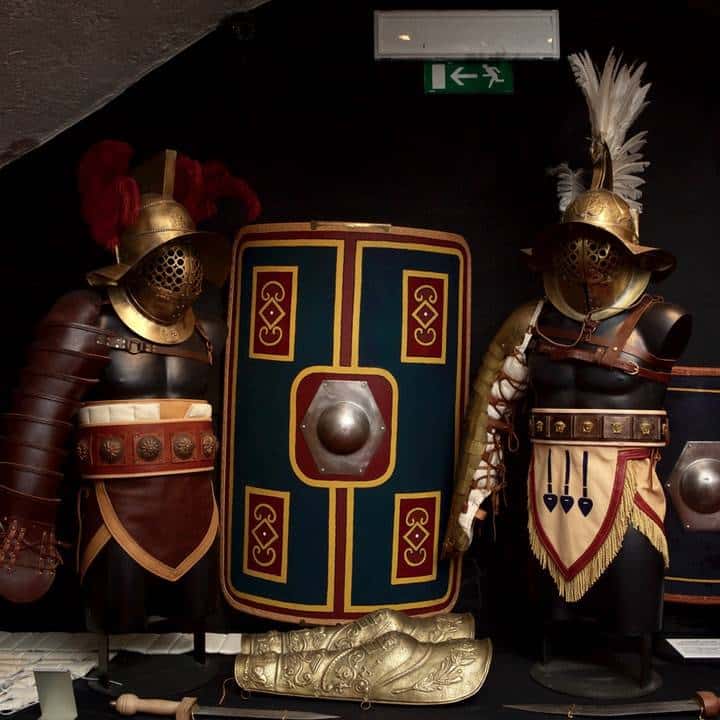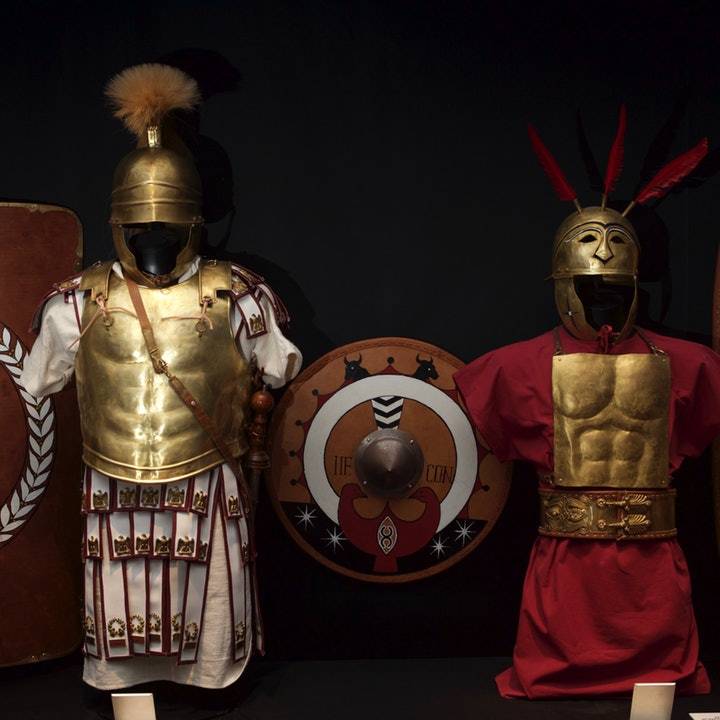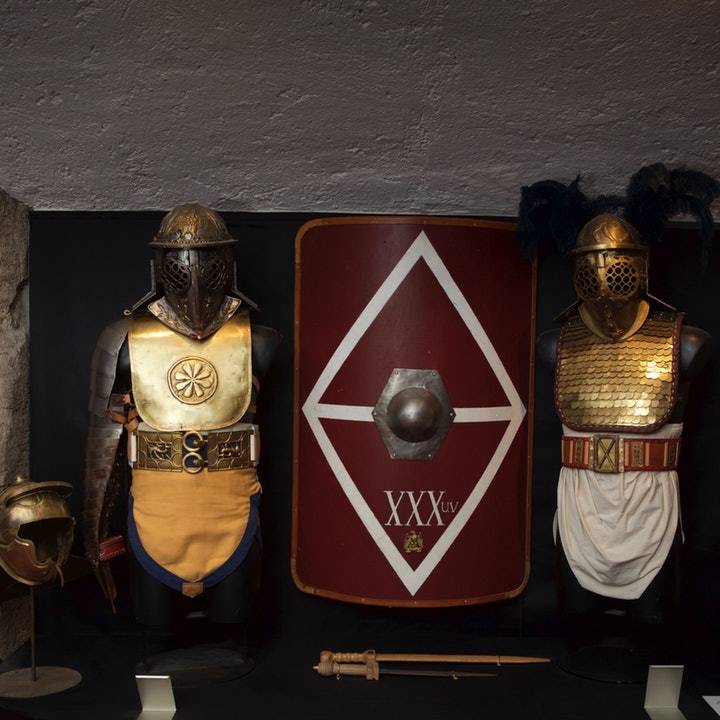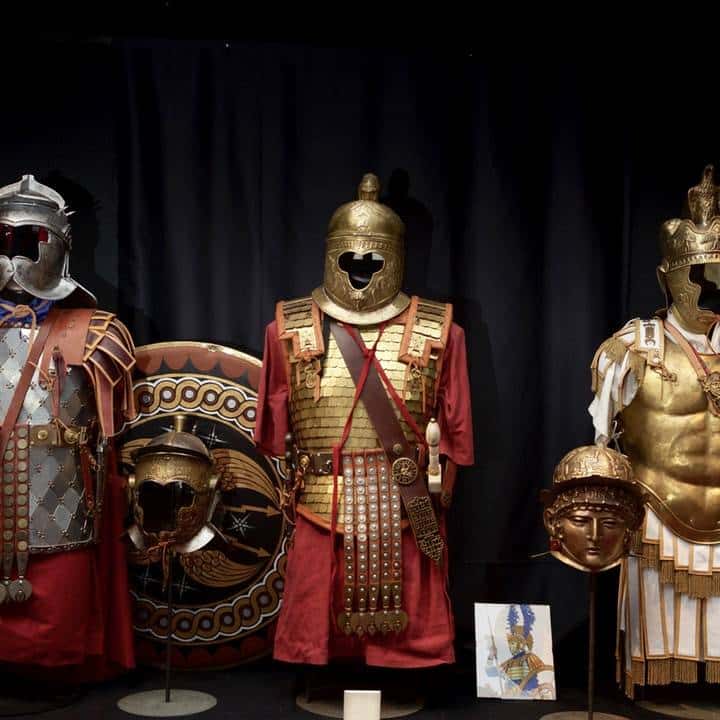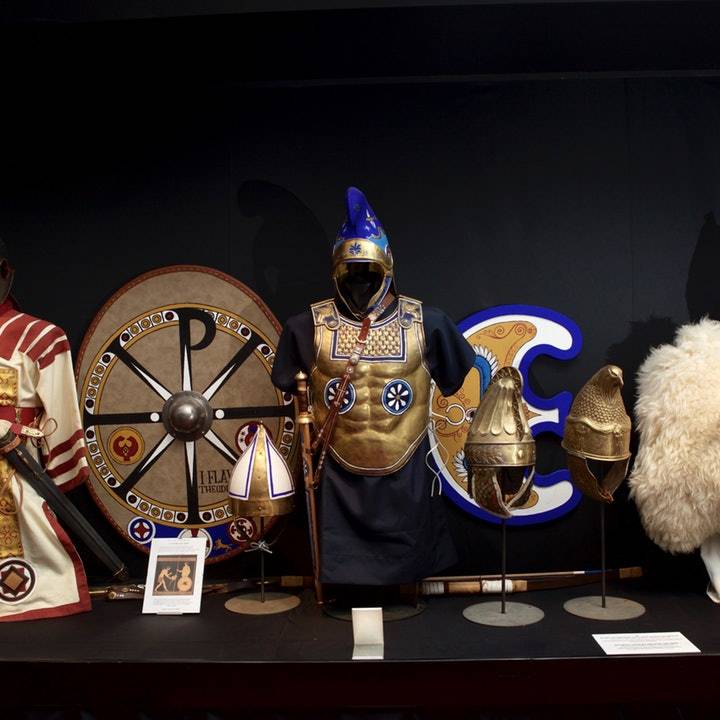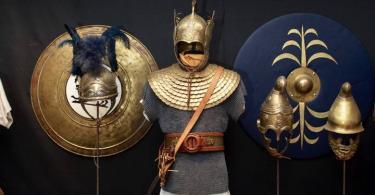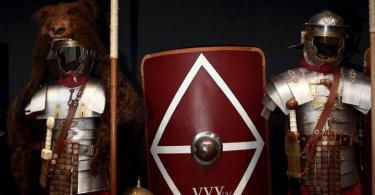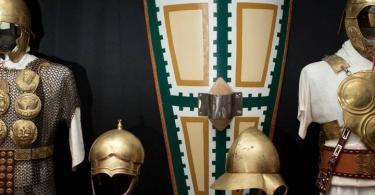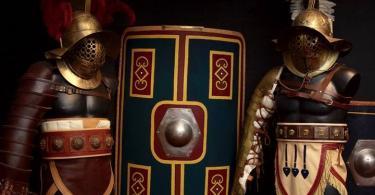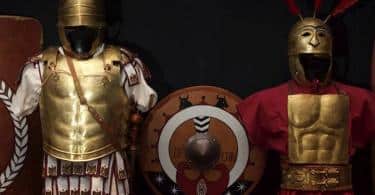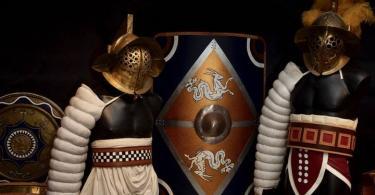86 Reviews
from €25.00 EUR
Organized by: Gruppo Storico Romano
Discover the armour, face masks, safety helmets, and tools (weapons etc.) used by Roman Gladiators. Gladiator Museum of Rome is near to the Colosseum in itself and is an area to stand up and near the armour and weapons made well-known by these combating males (and also ladies).
Learn more about the face masks, safety helmets, armour, and weapons, used by Roman Gladiators and armed force of old times. You’ll likewise have the possibility to learn more about exactly how they made and preserved the weapons of their trade, at this museum.
Step Back in Time with a Gladiator Show
Experience the captivating energy of a live gladiator show, complete with ancient dances, Vestal rituals, and pantomime performances. The event takes place in a carefully designed arena, just 3.5 km from the iconic Colosseum, transporting you to the heart of ancient Rome.
The gladiator show creates an immersive experience through the use of music, lights, and special effects. The talented performers, dressed in authentic armor and wielding real weapons, bring history to life before your very eyes.
The show is meticulously researched and executed by skilled historical reenactors, ensuring an authentic representation of gladiator combat and Roman customs. Observe the intricate details of their costumes and weaponry as they engage in thrilling battles.
Explore the Legionnaire’s Museum
Before the show, delve into the world of Roman legionnaires with a visit to the “Museo Storico-Didattico del Legionario Romano”. This educational museum provides fascinating insights into the lives, training, and equipment of these elite soldiers.
Admire the museum’s extensive collection of armor, weapons, and artifacts from ancient Rome, and learn about the tactics and strategies employed by the Roman military. The museum’s knowledgeable staff will guide you through the exhibits, ensuring a comprehensive understanding of this remarkable period in history.
Following your museum visit, relax with a complimentary cocktail in the Legion’s Armory. Surrounded by awe-inspiring artifacts, savor this unique opportunity to immerse yourself in the rich history of ancient Rome.
Don’t miss out on this unforgettable journey into ancient Rome’s thrilling history. Reserve your tickets now and prepare for an evening of unparalleled entertainment and education.
The Glorious History of Roman Gladiators
Roman gladiators were skilled combatants who fought for public entertainment in large arenas throughout the Roman Empire from 105 BCE to 404 CE. The majority of these fighters were slaves, prisoners of war, or criminals, but some were also free individuals seeking to earn a living or gain fame in the arena.

Roman Gladiators – Commodus by Edwin Blashfield (1848–1936)
The Origins of Gladiator Battles
The precise origins of Roman gladiator games are uncertain. Some historians believe that the Etruscans, a civilization predating the Romans, were the first to stage gladiator-like contests during funeral rites. Tomb frescoes in Campania, Italy depict fighters wearing helmets, shields, and spears, suggesting that these early contests held religious significance.
The first recorded Roman gladiator contest took place in 264 BCE as part of a funeral rite. Over time, the games evolved into munus, large-scale public events sponsored by wealthy aristocrats and emperors to demonstrate their power, wealth, and generosity.
Who Were the Gladiators?
Most gladiators were slaves, prisoners of war, or criminals forced to fight in the munus. Some were free individuals who had fallen on hard times and chose to enter the arena as a means of earning a living. Gladiators trained under harsh conditions, often segregated from the public outside the arena. Those who did not receive training were sent directly into battle as noxii, or “hurtful ones,” and typically met gruesome ends.
Despite their low social status, gladiators who fought or died valiantly could inspire admiration and even achieve fame. Artists celebrated these fighters by depicting them in carvings, statues, and frescoes.
Gladiator Combat and the Concept of Mercy
Contrary to popular belief, gladiator fights did not always end in death. Some matches were displays of skill, while others resembled plays or small private events. Gladiators could show mercy (missio) to their defeated opponents, who could also request mercy by dropping their weapons and raising their index finger. The crowd played a crucial role in deciding the fate of the defeated, with their chants determining whether the loser would be spared or executed.
To die well, a gladiator had to face death without begging, crying, or screaming. Those who died well were treated with respect and removed from the arena with dignity, while those who did not were subjected to brutal treatment, such as having their skulls crushed with a mallet.
The Different Types of Roman Gladiators
There were several distinct classes of gladiators, each with their own fighting styles, weapons, and armor. The four main types of gladiators were:
- Thracian: These gladiators wielded curved short swords called sicas and small, fist-held shields called parmas to deflect attacks.
- Samnite: The most heavily armored gladiators, Samnites used lances or swords and large, square shields called scuta. They also had heavily armored right arms and left legs.
- Murmillo: Recognizable by the fish-shaped crest on their helmets, Murmillos carried swords (gladii) and scuta. They had lightly padded right arms and left legs.
- Retiarius: The least armored gladiators, Retiarii wore only a padded shoulder piece and fought with a trident and a weighted net to ensnare their opponents. In addition to these main types, other specialized gladiators existed, such as the bestiarii, who were known for battling wild animals like tigers or lions, and the andabatae, who fought blindfolded.
Each class of gladiator typically fought against a specific type of opponent to create a visually appealing contrast between heavily armored and lightly armored fighters.
Famous Gladiators in History
Several Roman gladiators achieved fame and renown for their exceptional skills and courage in the arena. Some notable names include:
- Marcus Attilius: A volunteer gladiator, Attilius gained fame when he defeated the veteran gladiator Hilarus, who had previously won 12 fights. He then went on to defeat another experienced gladiator named Lucius Raecius Felix.
- Commodus: Portrayed by Joaquin Phoenix in the film Gladiator, Commodus was a Roman Emperor whose ego led him to perform in the Colosseum.
- Spartacus: Arguably the most famous gladiator, Spartacus was a Murmillo who led a slave rebellion known as the Third Servile War from 73 BCE to 71 BCE. Originally from Thrace, he was likely captured and enslaved before becoming a gladiator.
- Spiculus: A favorite of Emperor Nero in the 1st century AD, Spiculus was showered with wealth for his performances in the arena. When Nero faced overthrow, he requested that Spiculus end his life, but Spiculus could not be found in time, forcing Nero to take his own life.
Roman gladiators were more than just brutal combatants who fought to the death for public entertainment. They represented Roman martial ethics and, in some cases, achieved fame and admiration for their courage and skill. The various types of gladiators showcased the diverse fighting styles and weaponry of the time, while the stories of famous gladiators like Spartacus, Marcus Attilius, and Commodus remind us of the complex social and political landscape of ancient Rome.
- Entry to the Gladiator Museum.
- Gladiator Show of Ancient Rome.
- Gladiator School Experience,
- Guided Tour.
Free cancellation up to 1 day before your visit.
from €120.00 EUR
Duration: 2 Hours
Organized by: Gruppo Storico Romano
489 Reviews
from €74.70 EUR
Duration: 6 Hours
Organized by: Topbike Tours
955 Reviews
from €18.50 EUR
Seller: Tiqets
212 Reviews
from €15.00 EUR
Duration: 40 Min.
Seller: Tiqets
979 Reviews
from €48.60 EUR
Duration: 3 Hours
Organized by: Walks of Italy
710 Reviews
from €33.00 EUR
Seller: Rome Pass
from €118.00 EUR
Duration: 3 Hours
Organized by: Welcome Italy
8 Reviews
from €315.00 EUR (per group)
Duration: 3 Hours
Organized by: MEA Tour & Events
from €79.00 EUR
Duration: 3 Hours
Organized by:Gray Line I Love Rome
78 Reviews
from €219.00 EUR
Duration: 2 Hours
Seller: Viator
10 Reviews


